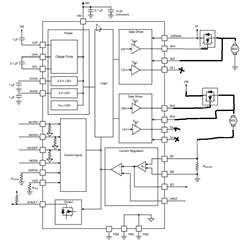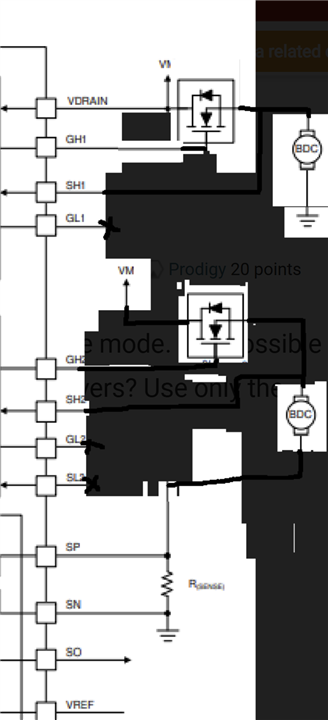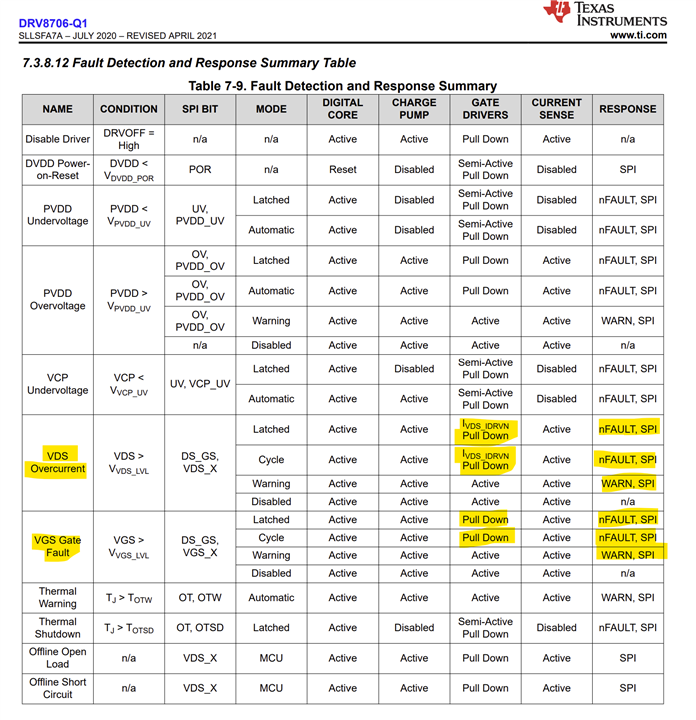Other Parts Discussed in Thread: DRV8106-Q1
Tool/software:
I need your support in selecting a gate driver
We have an application where:
- One motor needs to be controlled using a high-side switch,
- A second motor can be controlled using either a high-side or low-side switch, and
- Both motors must be able to rotate independently and unidirectionally, with duty cycle control from 0% to 100%.
The available supply voltages on the board are 5V and 21V.
Could you please review the following options and suggest a suitable gate driver that can be used to control both motors?
Options Under Consideration:
- Half-Bridge Smart Driver
Use the high-side output to drive one motor and the low-side output to drive the second motor. - DRV8106 for High-Side + Separate Low-Side Driver
Use the DRV8106 to control the high-side MOSFET for the first motor (leaving the low-side unconnected), and a separate low-side gate driver for the second motor. Please note: I only have 21V available for the low-side driver supply. - Dual Half-Bridge or H-Bridge Smart Gate Driver
Use only the high-side outputs to drive both motors, leaving the low-side outputs floating to save the cost of low-side MOSFETs. I am currently evaluating the DRV8702/DRV8703 and DRV8706 for this purpose. Could you please confirm if it's feasible to leave the low-side outputs unconnected in these drivers?




